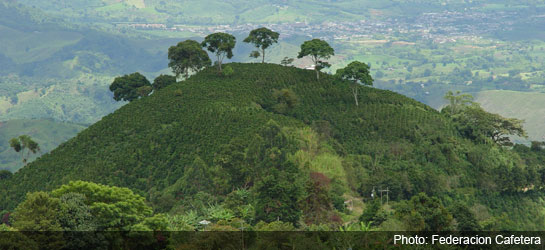
President Juan Manuel Santos assured Sunday that the Colombian government has prohibited mining in 47 coffee growing municipalities following the recommendations of UNESCO that considers the coffee region a World Heritage Site.
According to various media, The mining prohibition was prompted by the Colombian government’s alleged desire to declare certain municipalities in the departments of Valle del Cauca, Caldas, Quindio, and Risasalda as part of the Colombian “Cultural Coffee Landscape” (PCC), which assures a degree of cultural, social, and natural protection of the area. UNESCO recommended that the Colombian government stop all mining activity in the principle and surrounding areas of the PCC.
The recommendation largely resulted from the concerns of tourism agents and promoters in the area who are looking to obtain the PCC title in order to increase tourism to the coffee growing regions. Their belief is that mining exploitation and coffee cultivation are not compatible activities and should not be carried out in the same area.
However, in the department of Quindio, a large part of the land had already been authorized to carry out mining projects, but the local government objects.
“In Quindio, we don’t want mining,” Quindio Governor Julio Cesar Lopez told Santos.
The department of Quindio has asked for a secondary regulation that will be capable of controlling mining projects in the area so that they can still pursue sustainability and be given credit as being a PCC of Colombia.
In response, Santos said that “we will permit responsible mining in areas where there is no threat to destroy important cultural heritages, like (coffee cultivation) and other areas that we deem important.”
Cultural Vice-Minister Maria Claudia Lopez explained that the plan to sustain the Colombian PCC will be formulated and put into action by the end of 2011. The goal to have it ready is December 31 and it will be a collaboration between the Colombian Ministry of Culture, the National Federation of Coffee Cultivators, with support from the Ministries of the Environment, Agriculture, Trade, and the four departments’ local governments.

